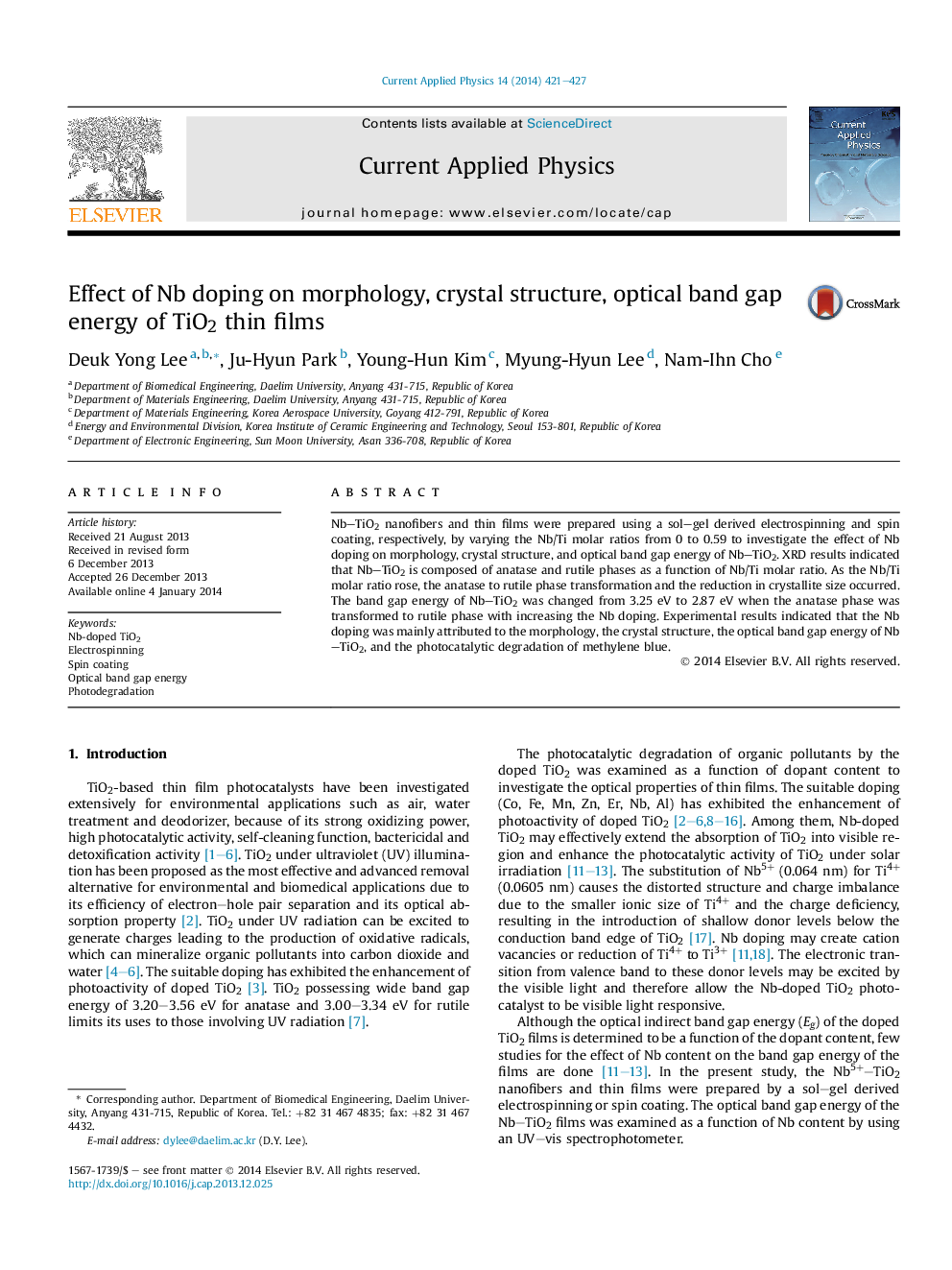| Article ID | Journal | Published Year | Pages | File Type |
|---|---|---|---|---|
| 1786253 | Current Applied Physics | 2014 | 7 Pages |
•The effect of Nb doping on optical band gap energy of the films was evaluated.•The apparent crystallite size decreased with increasing the Nb content.•The lowest Eg of 2.87 eV was found for the Nb–TiO2 thin film (0.59 Nb/Ti molar ratio).
Nb–TiO2 nanofibers and thin films were prepared using a sol–gel derived electrospinning and spin coating, respectively, by varying the Nb/Ti molar ratios from 0 to 0.59 to investigate the effect of Nb doping on morphology, crystal structure, and optical band gap energy of Nb–TiO2. XRD results indicated that Nb–TiO2 is composed of anatase and rutile phases as a function of Nb/Ti molar ratio. As the Nb/Ti molar ratio rose, the anatase to rutile phase transformation and the reduction in crystallite size occurred. The band gap energy of Nb–TiO2 was changed from 3.25 eV to 2.87 eV when the anatase phase was transformed to rutile phase with increasing the Nb doping. Experimental results indicated that the Nb doping was mainly attributed to the morphology, the crystal structure, the optical band gap energy of Nb–TiO2, and the photocatalytic degradation of methylene blue.
